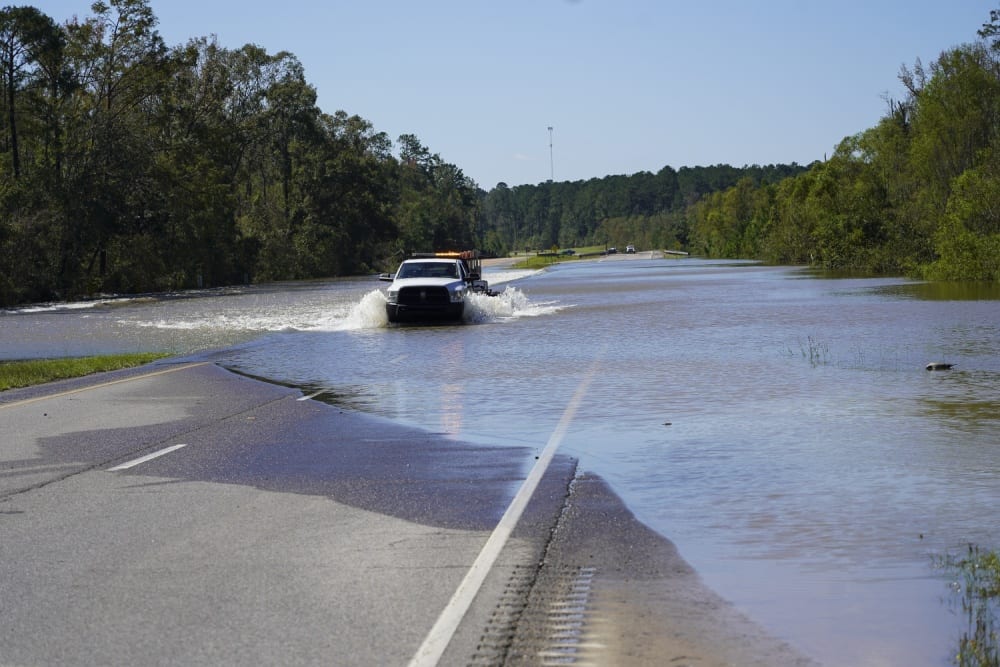You are here
COLUMN: Rethinking Disaster Readiness Before a Potentially Active Summer
Primary tabs
COLUMN: Rethinking Disaster Readiness Before a Potentially Active Summer
Sun, 2021-05-23 14:16 — mike kraft COLUMN: Rethinking Disaster Readiness Before a Potentially Active Summer - Homeland Security Today As we have seen with the ongoing COVID-19 response, the private sector truly controls a community’s destiny. Homeland Security Today
COLUMN: Rethinking Disaster Readiness Before a Potentially Active Summer - Homeland Security Today As we have seen with the ongoing COVID-19 response, the private sector truly controls a community’s destiny. Homeland Security Today On Thursday, May 20, the National Oceanic and Atmospheric Administration’s (NOAA) Climate Prediction Center released their annual Atlantic Hurricane season forecast and, once again, they are predicting an above-average season. Additionally, the National Interagency Fire Center (NIFC) is predicting above-average fire activity in the Western United States, citing NOAA’s National Centers for Environmental Information (NCEI) recent report that Arizona, New Mexico, Nevada, and Utah had their driest March and April in 126 years with California and Colorado having their third and fourth driest, respectively.
Additionally, this summer will mark the second consecutive hurricane and wildfire season that starts during the lingering COVID-19 pandemic. Once again, government, nonprofit and private-sector entities along with Americans in hurricane and wildfire-prone states will have to grapple with how to prepare for, respond to, and recover from disasters that are complicated enough in their own right, but are made even more complex given the current state of COVID-19 response, recovery, and vaccination efforts.
As we have seen with the ongoing COVID-19 response, the private sector truly controls a community’s destiny; the same is true after a natural disaster. Today, nearly 85 percent of the nation’s infrastructure – and critical supply chains that support a community’s lifelines – are privately owned and operated; moreover, most infrastructure systems are interconnected in some way. As technology advances infrastructure systems are likely to only grow more interconnected and interdependent allowing for greater risk of cascading failures across sectors. Accordingly, there are several fundamental concepts that should be considered and incorporated into pre-season hurricane and wildfire preparations and planning efforts currently underway.
Adopt FEMA’s Community Lifelines doctrine. The FEMA Community Lifelines concept was established as a result of multiple large-scale disasters impacting the country simultaneously in 2017. The Lifelines framework provides incident managers with a reporting structure to quickly stabilize a community after disaster strikes. FEMA has identified seven Community Lifelines: Safety and Security; Health and Medical; Communications; Hazardous Materials; Food, Water, Shelter; Energy (Power & Fuel); and Transportation. If any of these lifelines are down because of disaster or emergency, it is an indicator that lives are in jeopardy and/or life routine and supply chains are disrupted.
Before disaster strikes, all emergency managers must identify who owns the infrastructure and supply lines (e.g., grocery stores/chains, bulk water capability, power, fuel, telecommunications, etc.) within their communities. Once identified, it is important for emergency managers to establish a relationship with these private-sector partners and begin to effectively redesign emergency response plans, concepts, and emergency operations staffing patterns to help get these critical private-sector operations back up and running after a disaster.
Integrate private industry into response operations. Additionally, emergency managers often play a critical role within their communities – facilitating partnerships necessary to bring their communities back online after a disaster. Often, neighboring jurisdictions and private-sector infrastructure owners do not work in concert with each other to restore capability to impacted communities. For example, as power companies are restoring power in one part of the county, communication providers are working in another part. This ultimately allows the lifeline stability to languish and can hinder overall response efforts. Therefore, by integrating the private sector into emergency concepts and plans, communities can mitigate fragmented response efforts. ...

Recent Comments